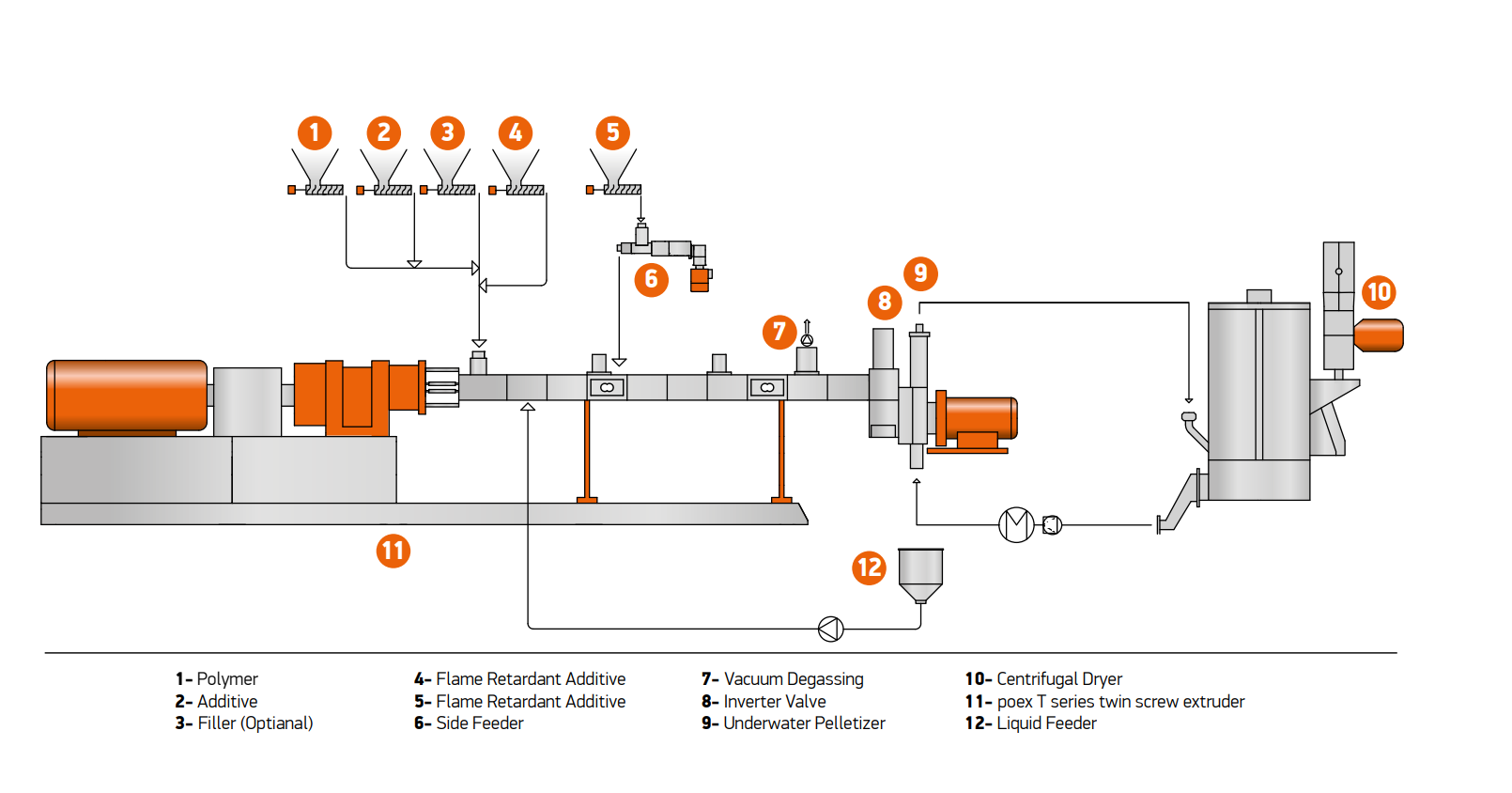
Halogen Free Flame Retardant Compounds
Halogen Free Flame Retardant (HFFR), Zero Halogen Flame Retardant (ZHFR), Low Smoke Zero Halogen (LSOH), Low Smoke and Fume (LSF) are all names associated with compounds that are used extensively in Aluminum Composite Panels (ACP), Wire & Cables, Flooring and Foam insulation.
These compounds are generally based on polyethylene or copolymers of polyethylene with the addition of mineral fillers to improve flame retardant properties. Their usage is much preferred for the applications of PVC and other halogenated polymers where lower smoke and lower acidic gas evolution are required in case of fire.
HFFR coupling in aluminum composite panel core compounds as well as wire and cable coating are highly mineral-filled compounds such as polyolefin matrices require high concentrations of common flame retardants, ATH or Mg(OH)2. In comparison ATH with Mg(OH)2; ATH has lower degradation temperature (~200°C) and is used with EVA/LLDPE based formulations but Mg(OH)2 (Magnesium Hydroxide) has a higher degradation temperature (~ 340°C) and is used when polypropylene is the base polymer.

Flame retardancy mechanism of mineral fillers
ATH is the most popular flame-retardant filler and works by a different flame retarding mechanism than other halogenated ones. ATH performs two additional functions as filler and as a smoke suppressant. The smoke, generated by burning materials has become increasingly important in the resent times. This is especially true in mass transiportation networks. Halogenated flame retardants produce smoke as a part of their functioning; it is the smoke that helps blowing out the fire.
ATH works by a different mechanism that does not produce smoke. The single usage of ATH in a high amount can produce a compound with a too little smoke. When it’s used in conjunction with halogenated compounds, the smoke level can be reduced. For efficient flame retardancy, 60-65% of the filler needs to be incorporated to the polymer matrix which concludes the reduction of original mechanical performances. In order to achieve excellent mechanical performance at a very high mineral filling and optimize mechanical performance, dispersion of agglomerates and homogeneous dispersion of ATH in the polymer matrix, it is necessary to increase polymer matrix acceptability of ATH through a unique screw design.
